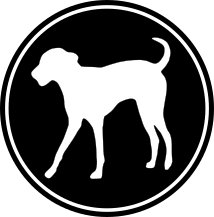“Inbreeding was once a valuable tool in shaping today’s breeds. As these have now reached a high degree of homogeneity, it has lost its importance and turned into a fatal and disastrous habit.” Hellmuth Wachtel, PhD Inbreeding (which, for the purposes of this article, includes “linebreeding”) has been the rule in dog breeding for the …
Revised 2012. The possibility of crippling HD manifesting in later months of a puppy’s life or past the dog’s middle age has been a bugaboo to breeders for a long time. The buyer of a 2- or 3-month old puppy today typically wants some kind of assurance that he is getting value for his dollar, …
Continued from Part 1. The emotional self-regulation (homeostasis) phase Homeostasis is the ability of an organism to maintain an equilibrium in a variable environment. Just as we have thermo-regulation (thermal homeostasis), we can also speak of emotional and relational homeostasis (Vincent, 1986). And we could even stretch the analogy somewhat: the organism has a …
Continued from Part 2 In clinical practice we have observed cases where phobic behavior (both towards the dog’s immediate surroundings and towards humans with which the dog has little contact) and anxiety develop in pre-puberty. This occasionally leads to an anxiety syndrome which I call “anticipated defense behavior” (Dehasse, 1990a). A Bernese sheep-dog (raised …
Introduction In our Western culture, the relation between humans and dogs is played out in a historical and socio-economic context that fosters the emergence of behavioral dysfunctions in animals (the discrepancy between the imagined dog and reality). Many behavioral problems in dogs arise from a failure to recognize social and environmental constraints during their growth. …
Revised December 2011. The attempts to get this article written remind me of my childhood attempts to catch fish in my hands, in the steam near our home. The target keeps moving, wiggling, eluding my grasp. Just about the time I decide to sit down and outline the various dog organizations, with a concentration in …
SchH 3 FH IPO 3 Kkl. Ia Sz 1439489 WT 19.03.1978 B S P 1983 18th
Index General Appearance Angulation & Movement Temperament, Character & Abilities Head Dentition Ears Eyes Neck Body Tail Forequarters Hindquarters Feet Color Coat Faults General Appearance The German Shepherd Dog is medium sized. With the hair pressed down, the height at the withers is measured by stick along the vertical as it …
This is a common use of the training collar, aversion training with a twist. The twist is that you not only want the dog not to eat stray piece of food, but that you also must train that it’s O.K. to eat under certain circumstances. While it’s appropriate to train a bird dog to …
SchH3 FH IP3 Kkl 1a normal lbz Sz 1658817 Kör: Medium tall, strong, good overall firmness, good expression, very good pigment, good topline, the croup a bit short, correct front, walks straight front and back, upperarm a bit short and steep, very well angulated rear quarters, while the reach of the steps is a bit …
